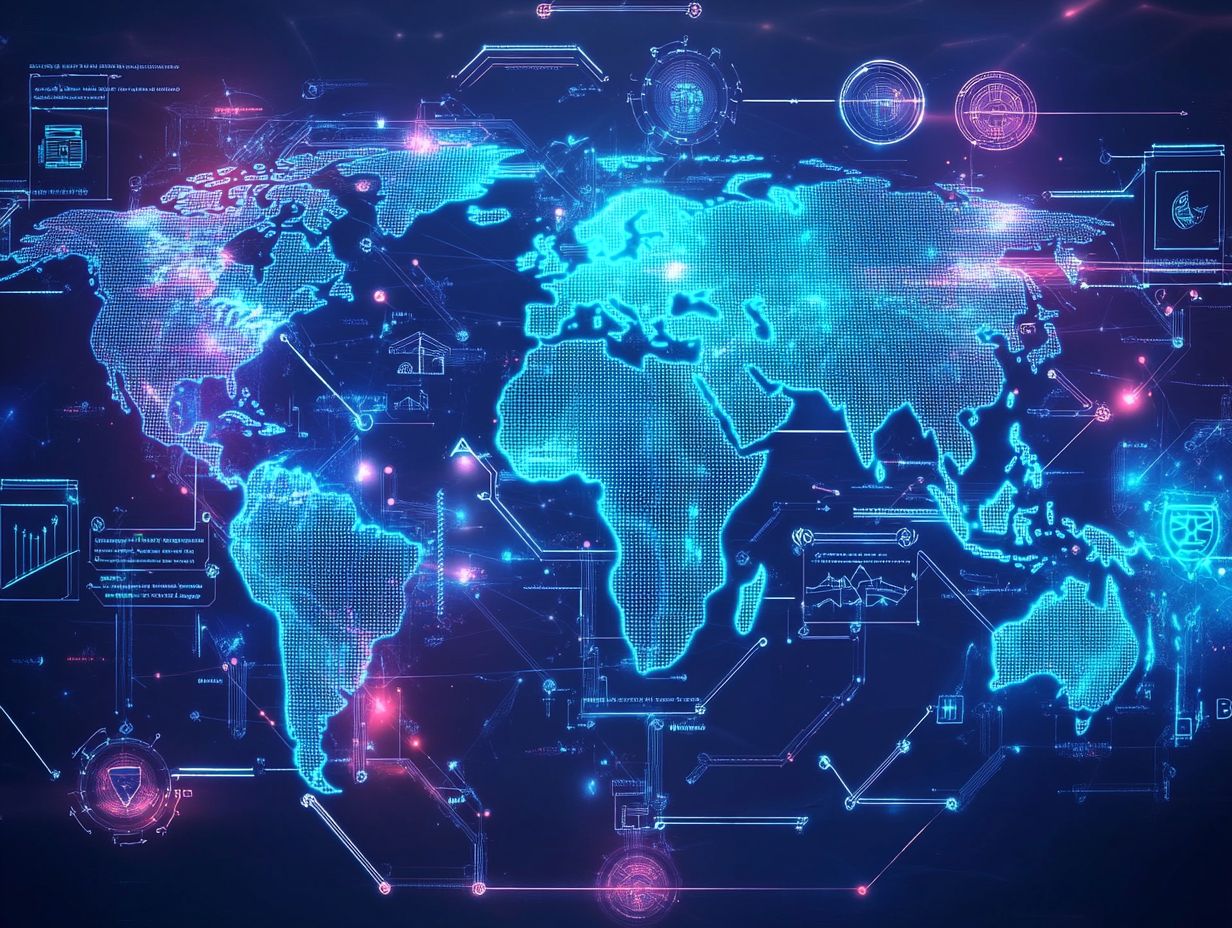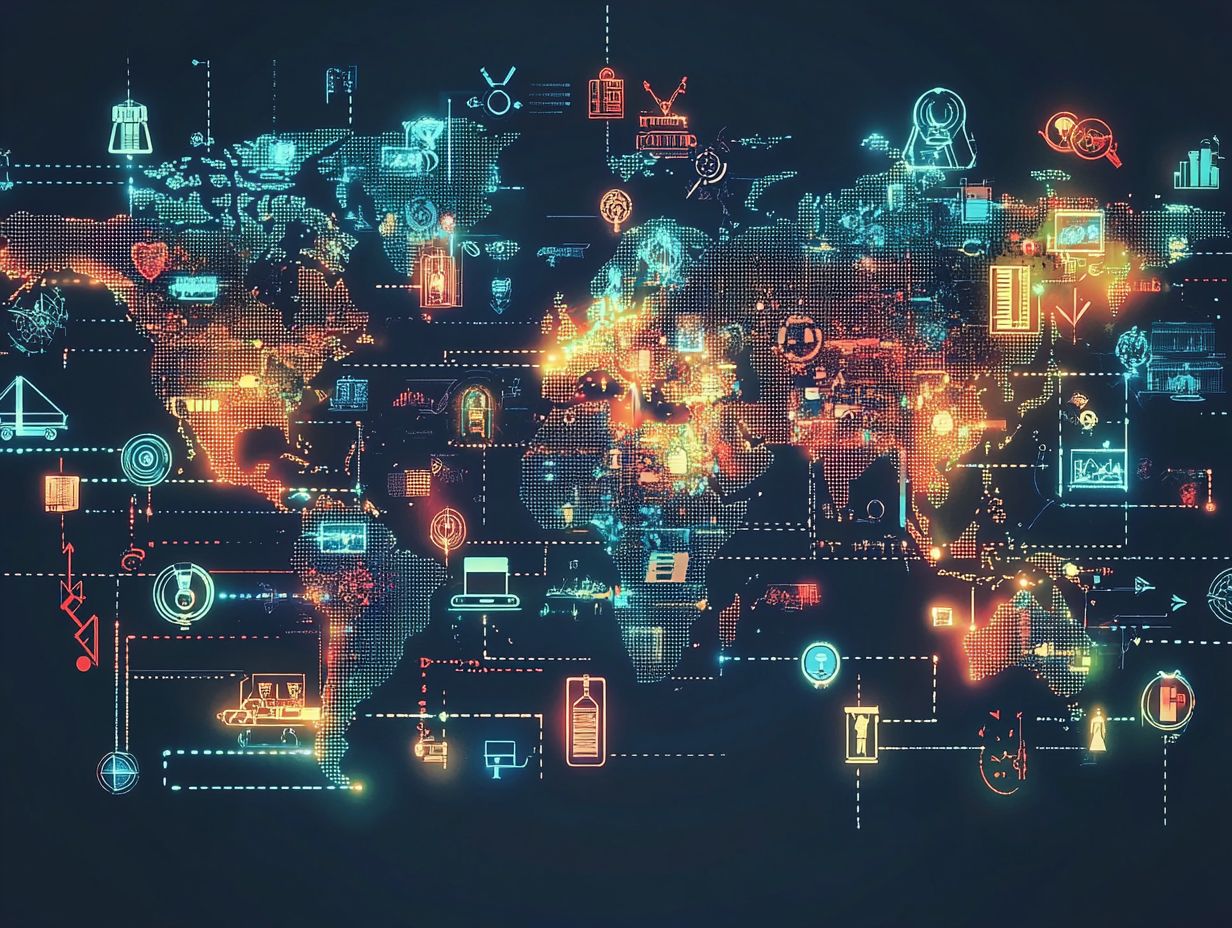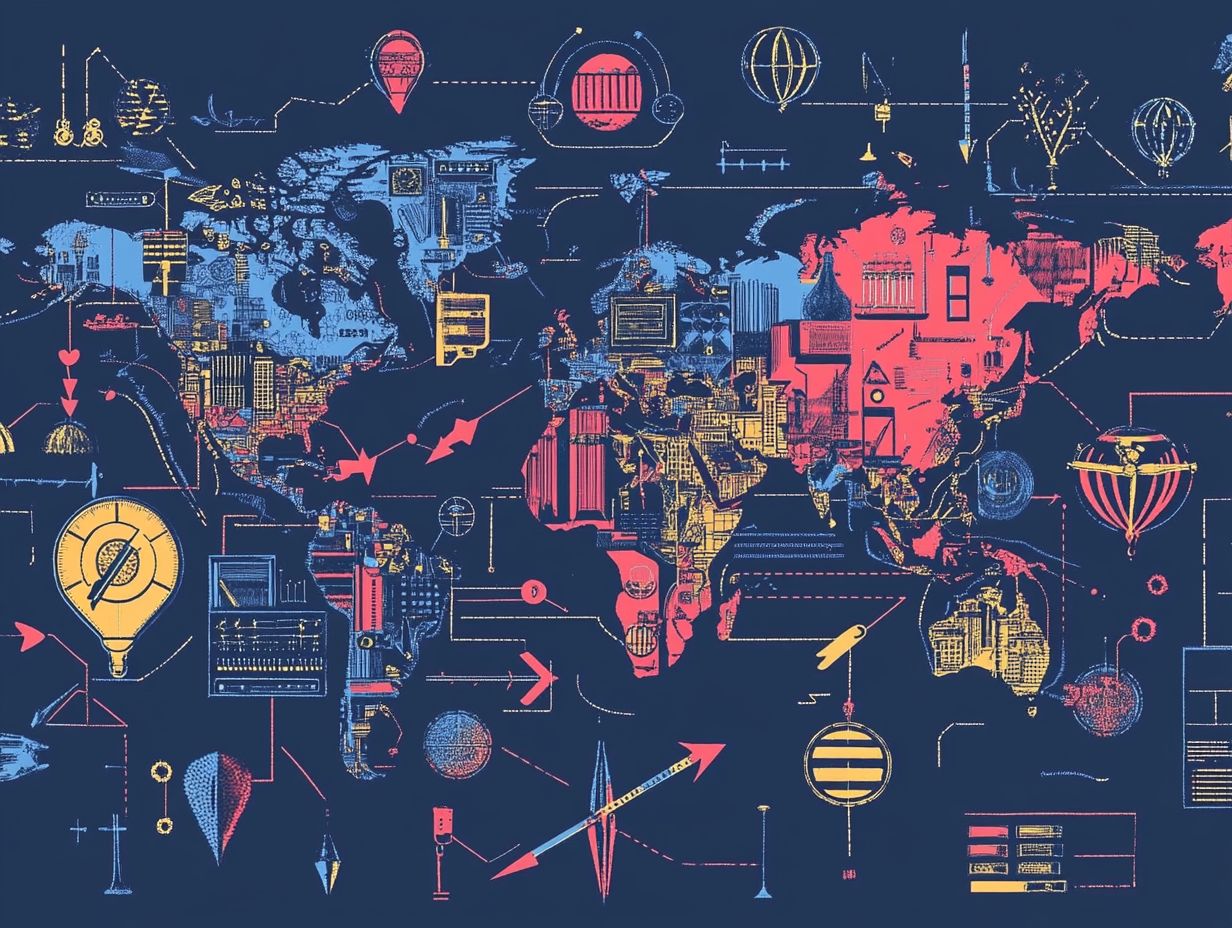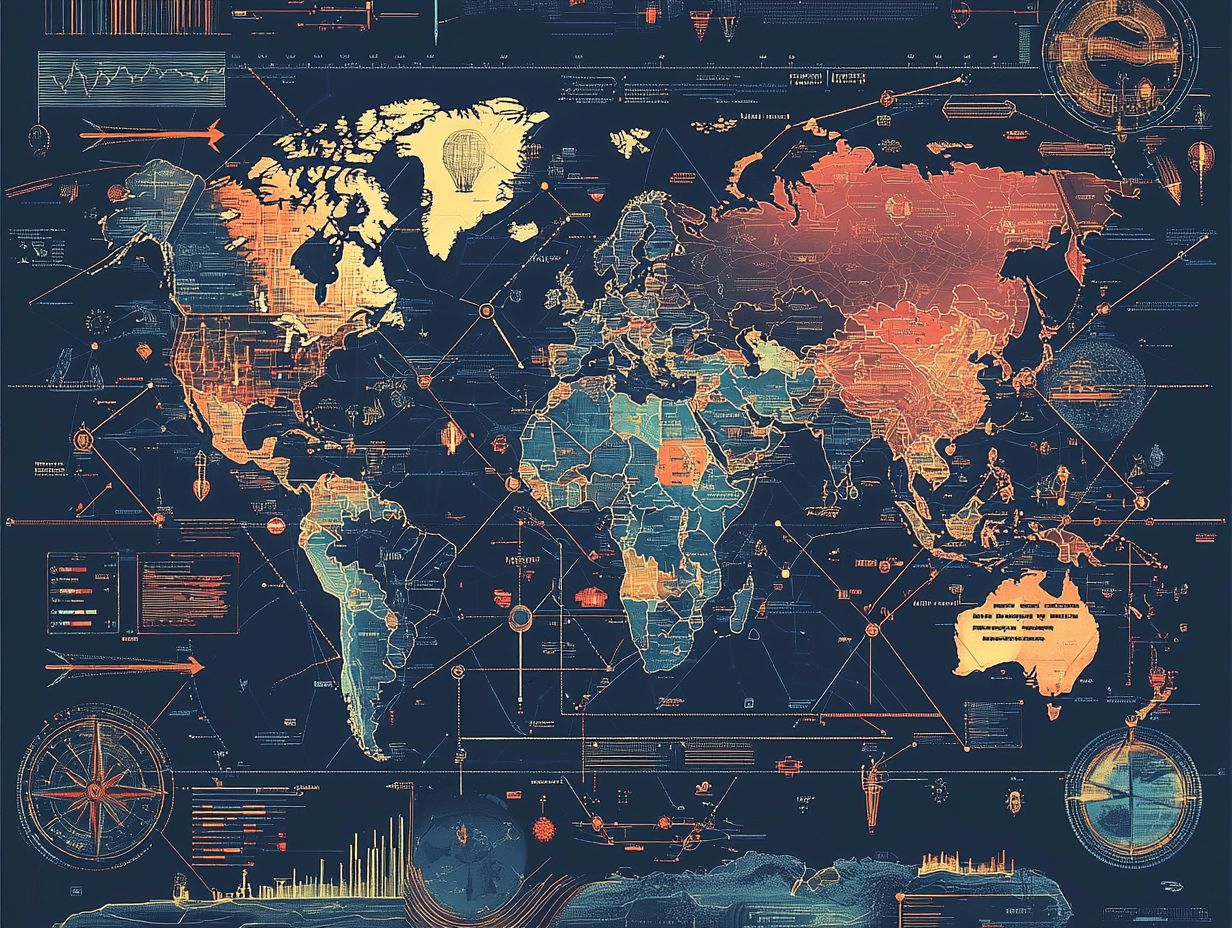What Are the Global Trends in IP Law?
In today’s increasingly interconnected world, grasping the nuances of the laws that protect ideas and inventions has never been more essential. As technology evolves at breakneck speed, the laws crafted to safeguard creations and innovations are keeping pace, but not without their challenges.
Dive into this article to discover the fascinating world of IP law! Explore the fundamentals of intellectual property, the latest global trends, and the significant impact of international agreements on emerging technologies. This article also looks ahead at the future of IP law, tackling pressing issues like finding the right balance between economic interests and public welfare, as well as the ongoing threats of piracy and counterfeiting.
Contents
- Key Takeaways:
- Overview of IP Law
- Current Global Trends in IP Law
- Key Issues and Debates in IP Law
- Future of IP Law
- Frequently Asked Questions
- What are the global trends in IP law?
- Why is it important to stay updated on global IP law trends?
- What are some common global trends in IP law?
- How do global IP law trends impact businesses?
- What role do international treaties and agreements play in global IP law trends?
- How can individuals and businesses keep up with global IP law trends?
Key Takeaways:

Intellectual property law refers to the legal protection of creations and innovations, including patents, copyrights, and trademarks.
The global trends in IP law include the adoption of international agreements and policies, along with addressing challenges posed by emerging technologies, piracy, and major IP litigation trends.
Key issues and debates in IP law revolve around finding a balance between economic interests and public good, as well as effectively combating piracy and counterfeiting.
Overview of IP Law
Intellectual Property (IP) Law stands as a cornerstone of the modern global economy. It meticulously protects innovations, patents, and trademarks while nurturing a competitive landscape.
This legal framework is designed to shield creators and inventors, ensuring their intellectual contributions are acknowledged and rewarded appropriately. As industries transform especially in cutting-edge fields like blockchain, which is a secure way to record transactions digitally, AI, or artificial intelligence, and data privacy the necessity for strong legal structures becomes ever more critical for fostering innovation and sustainability.
Grasping the nuances of IP law is essential for organizations navigating the intricate terrain of competitive analysis and licensing opportunities.
Defining Intellectual Property
Intellectual Property (IP) encompasses the remarkable creations of your mind. This includes inventions, literary and artistic works, as well as symbols, names, and images utilized in commerce all protected by patents, trademarks, and copyrights.
The importance of IP is monumental, as it cultivates innovation and creativity. It enables inventors and artists to enjoy the fruits of their labor. Patents, for instance, grant exclusive rights for a limited period, motivating you to pioneer groundbreaking technologies without the dread of imitation lurking around the corner.
Trademarks safeguard your brand identity, ensuring that consumers can easily recognize your products and services, thereby preserving the integrity of the marketplace. Copyrights also play an essential role, protecting your creative expressions and giving you control over your original works.
Together, these diverse forms of intellectual property create a crucial framework that propels the advancement of knowledge and culture, enabling you to contribute your unique voice to the world.
Current Global Trends in IP Law
As globalization reshapes the business landscape, current trends in intellectual property law are increasingly influenced by emerging technologies and evolving market data.
These factors are revolutionizing the ways in which intellectual property is created, managed, and enforced. This prompts a deeper understanding of the dynamic interplay between innovation and legal frameworks.
International Agreements and Policies

International agreements and policies are essential for harmonizing intellectual property (IP), which refers to creations of the mind, such as inventions and artistic works, laws across borders. They ensure that your intellectual property rights are respected and enforced on a global scale.
One pivotal agreement in this realm is the TRIPS Agreement. It sets forth minimum standards for IP protection and enforcement among member countries.
This framework fosters uniformity in local and international laws while streamlining your business operations in the global market. By aligning legal frameworks, the TRIPS Agreement influences how you innovate and protect your creations.
It empowers enterprises of all sizes to navigate international waters with enhanced legal assurance, ultimately promoting creativity and encouraging investment in new technologies.
This agreement enables local businesses to thrive on the global stage, driving economic growth and bridging the gaps in IP protection between developing and developed nations.
Emerging Technologies and IP Protection
Emerging technologies like AI and blockchain are creating both challenges and opportunities for intellectual property (IP) protection. These advancements prompt you to reconsider how legal frameworks can effectively safeguard innovations.
The rise of AI and machine learning in content creation raises intricate questions about authorship and ownership while blockchain technology offers unprecedented transparency and security for tracking IP rights.
However, as these technologies evolve, the threat of cyber vulnerabilities intensifies. It is essential for you to seek innovative solutions to prevent unauthorized access and exploitation.
By embracing digital transformation strategies, you can elevate your IP management systems, ensuring robust protection and compliance with emerging regulatory standards.
Key Issues and Debates in IP Law
Key issues in IP law frequently center on balancing economic interests with the public good. This is especially pertinent in the realms of piracy and counterfeiting, which pose significant threats to innovation and competition.
Balancing Economic Interests and Public Good
The challenge of balancing economic interests with the public good is a central theme in IP law. Various stakeholders push for stronger protections while also advocating for broader access to knowledge and innovation.
In this dynamic landscape, you ll encounter diverse perspectives. Businesses often pursue vigorous IP enforcement to protect their investments, while consumers champion the cause for more accessible information and resources that fuel creativity.
Legal experts enrich this conversation by dissecting the implications of rapidly evolving digital environments. They suggest frameworks that balance the protection of intellectual property rights with the necessity of public access.
By exploring these differing viewpoints, you can gain a nuanced understanding of the intricate relationship between innovation and legal protections, uncovering the complexities of this ongoing debate.
Addressing Piracy and Counterfeiting

Addressing piracy and counterfeiting is crucial for protecting intellectual property rights and creating an environment where innovations can flourish without the threat of infringement.
With the rise of digital technologies, the need for robust strategies becomes even more critical. The barriers to distributing counterfeit goods have dramatically diminished.
Governments and organizations are stepping up by implementing comprehensive legal frameworks like the Agreement on Trade-Related Aspects of Intellectual Property Rights (TRIPS). These ensure stringent enforcement of intellectual property laws.
Various industries provide inspiration through effective case studies. For example, the film industry has seen a reduction in piracy rates thanks to successful anti-piracy campaigns and international collaboration.
By adopting strong intellectual property enforcement strategies, you not only protect creators rights but also contribute to economic development, fostering innovation, attracting investment, and generating jobs in legitimate sectors.
Are you aware of how these agreements affect your business? Explore more about IP protections or attend related workshops to enhance your understanding.
Future of IP Law
The future of IP law is set for transformative shifts. Emerging technologies and globalization introduce a blend of challenges and opportunities that will redefine the protection of legal rights for creations of the mind.
Predicted Changes and Challenges
Changes in IP law suggest that you need to prepare for heightened scrutiny of existing regulations. Innovations and automation are redefining the landscape of intellectual property rights.
The rapid pace of technology transforms how ideas are generated. It also raises complex questions about ownership and authenticity. With artificial intelligence entering content creation and software patents becoming common, traditional frameworks may struggle to keep pace with these new realities.
As a stakeholder whether you’re an inventor or part of a corporation you’ll likely encounter legal gray areas that require clarity. International variations in IP laws can pose significant challenges for businesses operating across borders.
Legislators, technologists, and legal experts must collaborate to adapt current laws. This ensures they foster innovation while protecting the rights of original creators.
How IP Law Shapes the Global Economy
The impact of evolving IP law on the global economy is profound. Effectively protecting intellectual property rights unlocks pathways for innovation and competitive advantages across various industries.
This safeguarding of ideas stimulates creativity and encourages investment in research and development. It also shapes market behaviors and influences competitive analysis.
When companies can invest confidently in new technologies without the fear of imitation, they are more inclined to contribute to economic growth. This ultimately benefits consumers with enhanced products and services.
Clearer IP laws pave the way for international trade by creating a more predictable landscape. This leads to better market data and enables firms to make informed, strategic decisions.
Thus, the connection between robust IP frameworks and economic performance becomes increasingly clear.
Frequently Asked Questions

What are the global trends in IP law?
Global trends in IP law refer to current and emerging patterns, developments, and changes in intellectual property laws that affect countries worldwide, including recent developments in IP law.
Why is it important to stay updated on global IP law trends?
Staying updated on global IP law trends is crucial for individuals and businesses. It helps them remain informed about regulatory changes, ensure compliance, and protect their intellectual property rights.
What are some common global trends in IP law?
Some common global trends include increasing international cooperation, stricter enforcement of rights, and new technologies and digital platforms for managing IP rights.
How do global IP law trends impact businesses?
Global IP law trends significantly affect businesses by influencing how they operate, compete, and protect their IP assets. These trends may also require them to adapt to changing regulations and adopt new strategies for IP management.
What role do international treaties and agreements play in global IP law trends?
International treaties and agreements shape global IP law trends by promoting cooperation and harmonization of IP laws among countries. They often set minimum standards for IP protection and enforcement, influencing national laws and regulations.
How can individuals and businesses keep up with global IP law trends?
Individuals and businesses can keep up with global IP law trends by regularly following reputable information sources. This includes legal news websites, attending relevant conferences and seminars, and consulting with legal professionals who specialize in IP law.
Are you ready to navigate the changing landscape of IP law? Share your thoughts or questions in the comments below!






